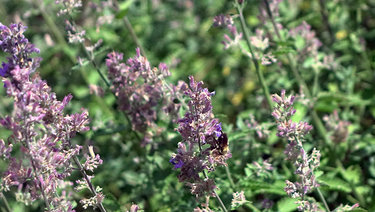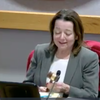Despite recent policy advances, pollinators have still got problems
GUILDERLAND — Late last month, the New York State Department of Environmental Conservation commemorated National Pollinator Week by blasting out a summary of recent steps the state government has taken to keep pollinators safe, such as restricting the use of neonicotinoid insecticides which have taken a toll on bee and butterfly populations, among others, which in turn affects the state’s economy.
“I’m glad they’re doing it,” Altamont beekeeper Stephen Wilson, a member of the Pollinator Stewardship Council and a former chairman of the Commissioner of Agriculture’s Apiary Industry Advisory Committee, told The Enterprise this week. “It makes people aware of the fact that we need pollination. Pollinator week is great.”
Wilson has been keeping bees for nearly five decades, ever since his neighbor, Don Schierbaum, pointed out that his property — which overlooks the Watervliet Reservoir and is surrounded by other neighbors who generally avoid pesticides, and which once had apple orchards — was ideal for beehives and got permission to use it to store his own.
As Wilson watched Schierbaum tend to his hives and gradually started helping out in different ways, he eventually caught the bug, so to speak.
Since then, he’s become an advocate for research and legislation in the world of bees, and has been named beekeeper of the year by the Empire State Honey Producers Association.
Wilson’s property, though it no longer has apple orchards, is still a wonderful place for bees to live (or so he hopes, he said).
But despite how nice things are on his little plot of land, and the recent advances toward a safer world for pollinators like bees, butterflies, and other insects, these species still face a great deal of danger, Wilson explained.
Varroa mites, an invasive species, he said, are “probably [the] main concern” for beekeepers, because they not only weaken the bees that they rely on as hosts, but transmit diseases, which quickly overrun tight-knit colonies. And colonies sometimes have weakened immune systems from overuse of “bad chemicals,” as he calls them, such as the weed-killer glyphosate.
“That stuff is used by landscapers and people who want nice lawns, because what it does is kill broadleaves, or arrests their development,” Wilson said, adding that it’s also commonly used by farmers.
Chemicals that are applied to plants are obviously frequently picked up by pollinators that buzz around and travel (in the case of honey bees) up to three miles away from their hive, he explained, but the chemicals also get washed away into bodies of water, where they disperse even further. Pollinators, like any other life form, need water to survive, and are impacted by water pollution.
When people think about pollution and insects and animals, Wilson said, there’s a tendency to focus on a concept known as LD-50, or the dose that will kill 50 percent of a given population in a lab. But the danger for pollinators is not just in lethal doses.
One of the sublethal effects of pollutants like glyphosate, Wilson said, “is depression of immunity.” He said there may be developmental impacts on bee populations, too, like legs that don’t grow long enough, or navigation systems that malfunction. Because these impacts occur over the long-term, they’re less likely to be seen, Wilson explained.
He went on to say that honey bees are particularly susceptible to long-term effects of pollutants because pollutants accumulate in honey combs. In fact, bees are so good at collecting pollutants that environmentalists have turned them into an instrument to measure just that.
In addition to having a direct effect on pollinators, the chemicals that people use to keep their lawns looking trim and proper wipe out what would otherwise be a rich habitat for those friendly insects, as The Enterprise recently noted in an editorial.
“A [manicured] lawn is a desert to a honeybee,” Wilson said. “We’re trying really hard to get more people to plant wildflowers, to not cut so much and maybe let the grass get nice and long for the summer season.”
But it’s one thing to convince people that their beauty standards can be adjusted, and another to convince farmers and pesticide manufacturers, who have an obvious financial stake in their own behavior, to cut down on pollution, Wilson said.
When he was on the Apiary Industry Advisory Committee, he said, he was one of only two beekeepers on the 12-person committee; meanwhile, there were three members who belonged to the pesticide industry.
“You can imagine how much we got done,” he said. “I raised hell … I think it was to keep the governor happy, or whatever. The pesticide guys have got lobbyists. We don’t have any lobbyists.”
But Wilson’s been involved in putting together a five-day conference in Ithaca, where there will be meetings, workshops, “the whole nine yards,” he said.
“We’re going to try to get people there to be more conscious about pollinator health and try to get better regulations of pesticides.”



